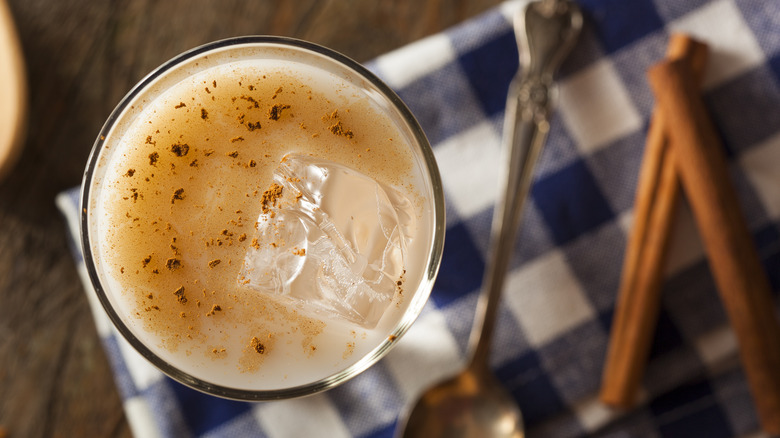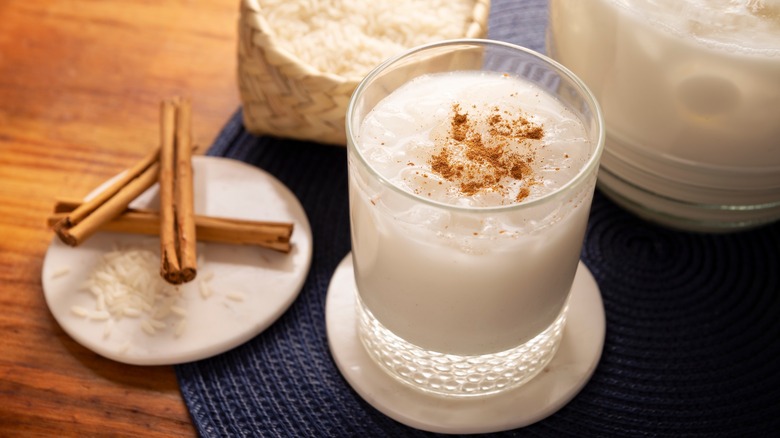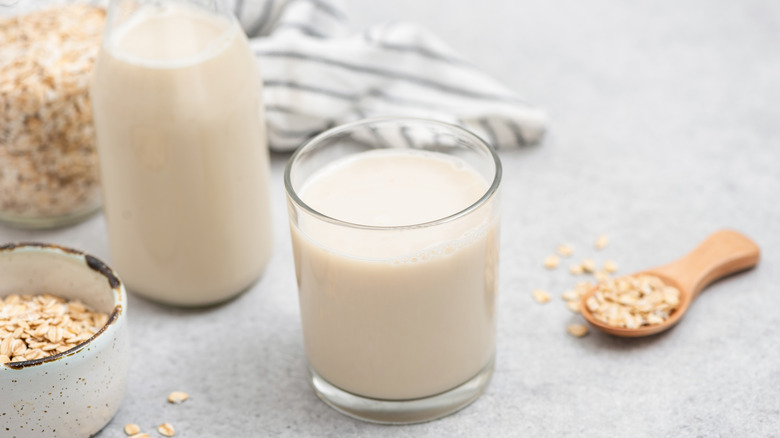Horchata Vs Agua De Avena: How Do These Drinks Differ?
If you've spent any amount of time at taquerias or sit-down Mexican restaurants, you've probably seen your fair share of horchata and agua de avena on menus. Perhaps you've even tried one or both of these light, sweet drinks that offer a refreshing break from traditionally spicy food. Both are aguas frescas, which are nonalcoholic Mexican drinks (that you can make at home, by the way), and they're often featured at Mexican and other Latin American restaurants. Generally speaking, aguas frescas are made by blending water, sugar, and some sort of grain, fruit, seed, or even edible flowers like hibiscus. The drink is then served cold (often over ice).
Although Mexican horchata and agua de avena look and taste quite similar, with their pale color, thin consistency, and use of cinnamon, these aguas frescas are made with different grains. Mexican horchata is made by soaking rice in water or grinding it into a flour-like consistency before blending it with sugar, cinnamon, and sometimes almonds. Agua de avena uses a very similar process of soaking oats in water and then blending the mixture with sugar and cinnamon.
Horchata wasn't always made with rice and isn't unique to Mexico
While horchata and agua de avena are similar, horchata is arguably the more popular and widespread of the two aguas frescas. Still, the horchata you've likely had at your neighborhood Mexican restaurant, or even while on vacation south of the border, isn't the original (or only) horchata. While Mexican-style horchata is incredibly popular in the United States, the drink came to Mexico by way of Valencia, Spain. The main difference between Mexican and Spanish horchata is that the latter is made with tiger nuts instead of rice. The drink was brought to Mexico by Spanish conquistadors, where it evolved into the popular rice-based variation.
Even the Spanish version, however, wasn't the original horchata. Historians believe the beverage originated in North Africa, possibly even Ancient Egypt, where a drink was made with barley as well as boiled or soaked aniseed, caraway, fenugreek, and cinnamon. The Moors ultimately brought this beverage to Spain. Once in Spain, the widespread tiger nuts (which are actually tubers like sweet potatoes) became the base of the drink. Today, versions of horchata also exist in Puerto Rico, where it's made from sesame seeds; Ecuador, where it's a tea-like blend of herbs and flowers; and other parts of Central America, where it's most often made from morro seeds.
Agua de avena is the predecessor of oat milk
Agua de avena literally means oat water in English, and if the process of making it (blending oats and water with a sweetener and spices) sounds a lot like our recipe for homemade oat milk, you're not wrong. Commercial oat milk, the kind that's gained popularity in North America, is said to be a 1990s invention by a pair of Swedish brothers, but many cultures have been drinking versions of oat milk — or oat water — for hundreds of years, if not longer. Oats were brought to North and South America in the 1600s and, given the drink's similarity to horchata, it's quite likely oats were used to make agua de avena pretty soon after their introduction to the region.
Like horchata, agua de avena comes in different forms across Latin America. In Colombia, the drink (called avena Colombiana) is made by simmering oats, water, milk, sugar, and spices before blending the mixture and serving it cold. In other parts of Latin America and the Caribbean, similar drinks (called fresco de avena or refresco de avena) are made by combining oats, water, and sugar, sometimes with lime and spices. In Honduras, the oats are commonly eaten with a spoon once the drink is finished, while other versions strain the oats prior to serving.


